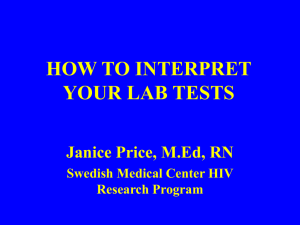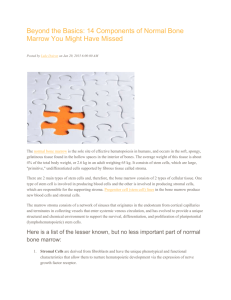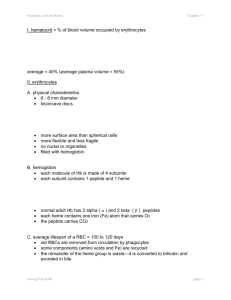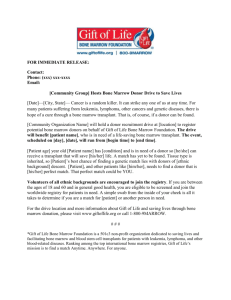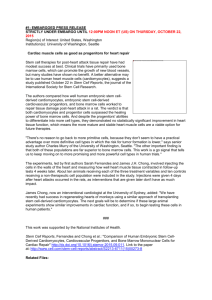cells practice quiz
advertisement
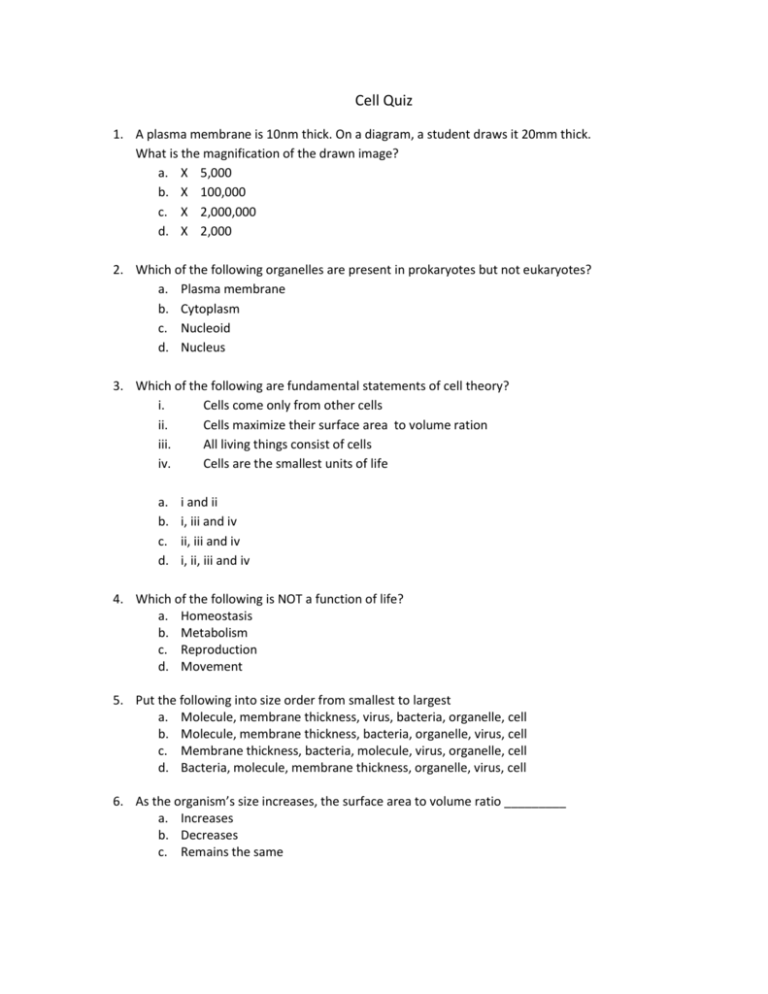
Cell Quiz 1. A plasma membrane is 10nm thick. On a diagram, a student draws it 20mm thick. What is the magnification of the drawn image? a. X 5,000 b. X 100,000 c. X 2,000,000 d. X 2,000 2. Which of the following organelles are present in prokaryotes but not eukaryotes? a. Plasma membrane b. Cytoplasm c. Nucleoid d. Nucleus 3. Which of the following are fundamental statements of cell theory? i. Cells come only from other cells ii. Cells maximize their surface area to volume ration iii. All living things consist of cells iv. Cells are the smallest units of life a. b. c. d. i and ii i, iii and iv ii, iii and iv i, ii, iii and iv 4. Which of the following is NOT a function of life? a. Homeostasis b. Metabolism c. Reproduction d. Movement 5. Put the following into size order from smallest to largest a. Molecule, membrane thickness, virus, bacteria, organelle, cell b. Molecule, membrane thickness, bacteria, organelle, virus, cell c. Membrane thickness, bacteria, molecule, virus, organelle, cell d. Bacteria, molecule, membrane thickness, organelle, virus, cell 6. As the organism’s size increases, the surface area to volume ratio _________ a. Increases b. Decreases c. Remains the same 7. Prokaryotic cells divide by __________ a. Mitosis b. Meiosis c. Cytokinesis d. Binary fission 8. A student observes and draws an Amoeba, using the high power lens of a microscope. The diameter of the drawing is 100mm. The actual diameter of the Amoeba is 100 micrometers. What is the magnification of the drawing? a. b. c. d. 10 50 500 1000 9. Below is a micrograph of an E. coli bacterium undergoing reproduction. X In the diagram, what does the label X identify? a. b. c. d. Nucleoid region Chromatin Histones Endoplasmic reticulum 10. A red blood cell is 8 µm in diameter. If drawn 100 times larger than its actual size, what diameter will the drawing be in mm? a. 0.08 mm b. 0.8 mm c. 8 mm d. 80 mm 11. Outline one therapeutic use of stems cells. …………………………………………………………………………………………………………………………………………… …………………………………………………………………………………………………………………………………………… …………………………………………………………………………………………………………………………………………… …………………………………………………………………………………………………………………………………………… …………………………………………………………………………………………………………………………………………… …………………………………………………………………………………………………………………………………………… …………………………………………………………………………………………………………………………………………… Cell Quiz Key 1. 2. 3. 4. 5. 6. 7. 8. 9. 10. 11. C C B D A B D D A B When a patient has cancer and is given high doses of chemotherapy, the chemotherapy kills the cancer cells but also the normal cells in the bone marrow. This means that the patient cannot produce blood cells. Before the chemotherapy treatment, the patient can undergo a bone marrow harvest in which stem cells are removed from the bone marrow by using a needle which is inserted into the pelvis (hip bone). Alternatively, if stem cells cannot be used from the patient then they can be harvested from a matching donor. After the chemotherapy treatment the patient will have a bone marrow transplant in which the stem cells are transplanted back into the patient through a drip, usually via a vein in the chest or the arm. These transplanted stem cells will then find their way back to the bone marrow and start to produce healthy blood cells in the patient. Therefore the therapeutic use of stem cells in bone marrow transplants is very important as it allows some patients with cancer to undergo high chemotherapy treatment. Without this therapeutic use of stem cells, patients would only be able to take low doses of chemotherapy which could lower their chances of curing the disease.
